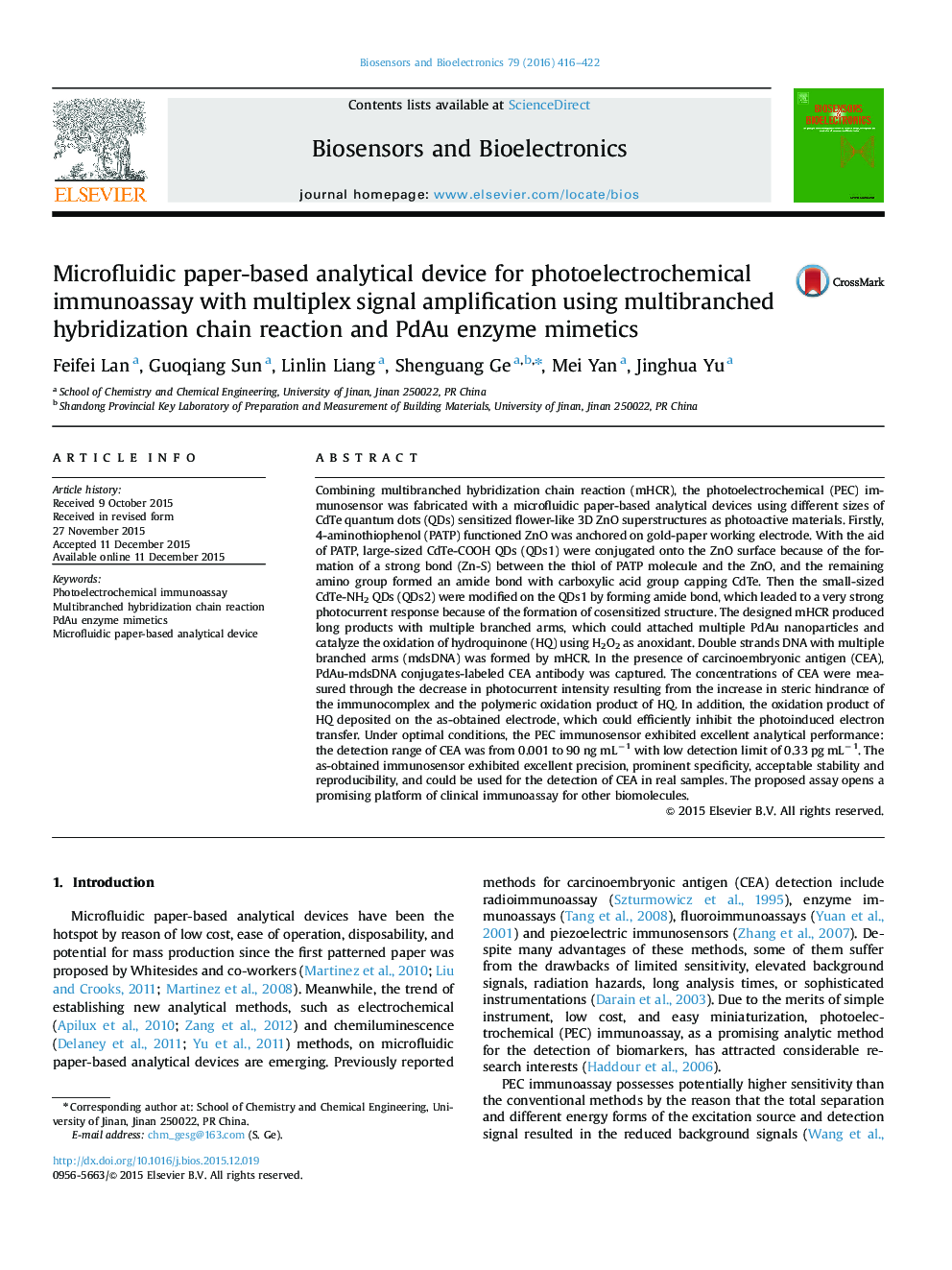| Article ID | Journal | Published Year | Pages | File Type |
|---|---|---|---|---|
| 7231060 | Biosensors and Bioelectronics | 2016 | 7 Pages |
Abstract
Combining multibranched hybridization chain reaction (mHCR), the photoelectrochemical (PEC) immunosensor was fabricated with a microfluidic paper-based analytical devices using different sizes of CdTe quantum dots (QDs) sensitized flower-like 3D ZnO superstructures as photoactive materials. Firstly, 4-aminothiophenol (PATP) functioned ZnO was anchored on gold-paper working electrode. With the aid of PATP, large-sized CdTe-COOH QDs (QDs1) were conjugated onto the ZnO surface because of the formation of a strong bond (Zn-S) between the thiol of PATP molecule and the ZnO, and the remaining amino group formed an amide bond with carboxylic acid group capping CdTe. Then the small-sized CdTe-NH2 QDs (QDs2) were modified on the QDs1 by forming amide bond, which leaded to a very strong photocurrent response because of the formation of cosensitized structure. The designed mHCR produced long products with multiple branched arms, which could attached multiple PdAu nanoparticles and catalyze the oxidation of hydroquinone (HQ) using H2O2 as anoxidant. Double strands DNA with multiple branched arms (mdsDNA) was formed by mHCR. In the presence of carcinoembryonic antigen (CEA), PdAu-mdsDNA conjugates-labeled CEA antibody was captured. The concentrations of CEA were measured through the decrease in photocurrent intensity resulting from the increase in steric hindrance of the immunocomplex and the polymeric oxidation product of HQ. In addition, the oxidation product of HQ deposited on the as-obtained electrode, which could efficiently inhibit the photoinduced electron transfer. Under optimal conditions, the PEC immunosensor exhibited excellent analytical performance: the detection range of CEA was from 0.001 to 90 ng mLâ1 with low detection limit of 0.33 pg mLâ1. The as-obtained immunosensor exhibited excellent precision, prominent specificity, acceptable stability and reproducibility, and could be used for the detection of CEA in real samples. The proposed assay opens a promising platform of clinical immunoassay for other biomolecules.
Related Topics
Physical Sciences and Engineering
Chemistry
Analytical Chemistry
Authors
Feifei Lan, Guoqiang Sun, Linlin Liang, Shenguang Ge, Mei Yan, Jinghua Yu,
